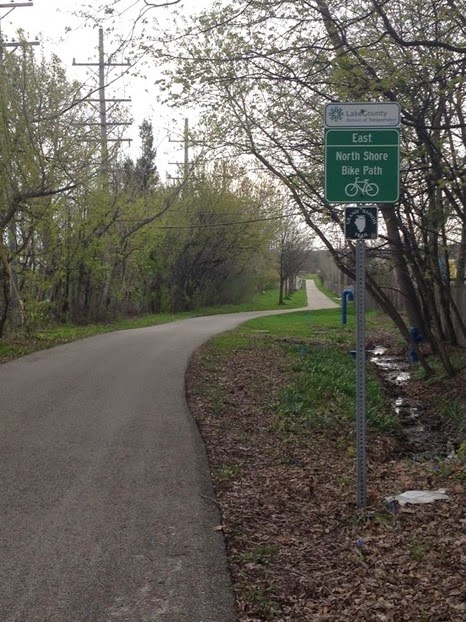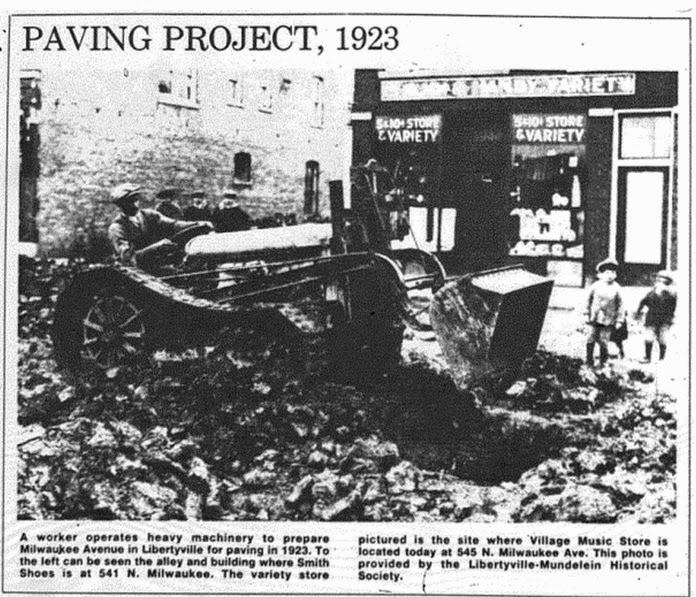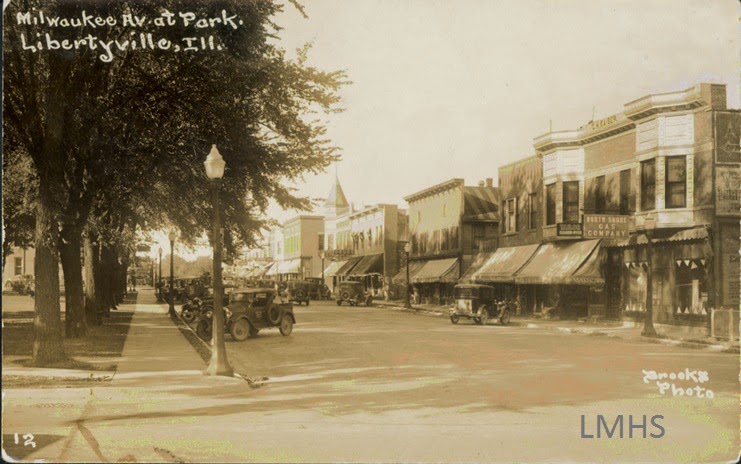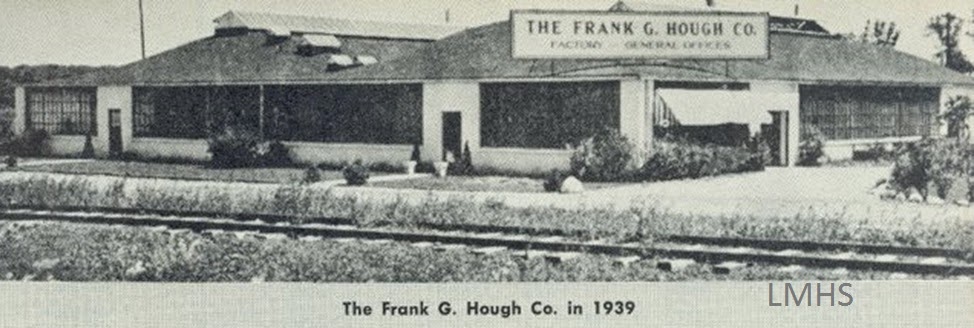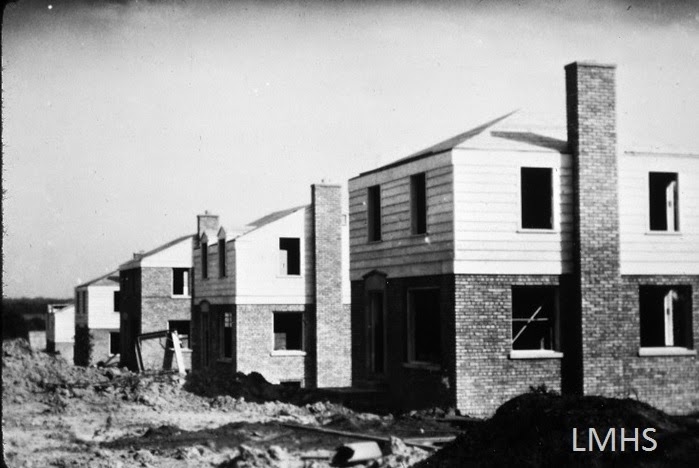Welcome back to part 2 of local history librarians Sonia Schoenfield’s and Jenny Barry’s presentation about the growth of Libertyville presented to the third grade at Copeland Manor School this past May.
Do you ride your bike on the railroad tracks? We do!
The 1920s proved to be another time of big population growth for Libertyville. One of the big reasons for this was improved transportation providing better and easier access to Libertyville. Libertyville’s other rail line carried electric trains and ran through the southern part of the village. (The North Shore Bicycle path takes its place today).
|
|
The first electric rail cars ran to Libertyville from Lake Bluff in 1903. About a decade later Samuel Insull obtained control of the electric railway system known as the North Shore Line and began improvements almost immediately. In 1924, due to increased volume on the North Shore Line, another line to the west of the North Shore was needed to accommodate the high speed inter-urban trains going to Milwaukee. The new line opened on June 5, 1926, with inter-urban trains to Chicago from Libertyville and Mundelein which ran once an hour.
In addition to the improved electric train line, there was something else that made traveling by car to Libertyville a whole lot easier…..paved roads.
We take many aspects of life for granted in the 21st century, aspects that were not at all guaranteed in the 1920s. For instance, the 1920s saw many streets in Libertyville paved for the first time and parking lines were drawn on Milwaukee Avenue downtown.
On the other hand, some things never change. Motorists complain about the condition of the roads now, and they certainly did in the 1920s. As an example, we submit this letter nominating Milwaukee Avenue as “The World’s Worst Road” published in the Chicago Tribune, August 29, 1920:
“Sir: Allow me to nominate that unspeakable ten miles of drainage ditch they call a road north of Wheeling as Great Grandaddy of all the poor highway species. It is not fair to think of it in the same breath with honest, twentieth century transportation lines. It is the pariar [sic] of the highway family, the leper among even those other road crimes in Lake county.
Let the motorist who leaves Cook county concrete and ventures north through Half Day and Libertyville bid farewell to all he holds dear under his hood. Ten miles an hour over those awful chuck holes is breakneck speed. Faster is suicide. As far as I could learn, neither county nor township has worked the worst part of this disgrace this season. Holes are continuous through Antioch on the way to Lake Geneva.”
With better access to the town, Libertyville’s population grew by 75% between 1920 and 1930 – from 2126 to almost 4,000 residents .
World War II Veterans return home
Over fifteen million veterans returned to their homes after the end of World War II. After fighting in the war, these veterans could hardly wait to settle down and get back to a normal life. They started by looking for jobs. The public rallied around veterans, and employers were eager to hire them.
One of those companies was The Frank G. Hough Company of Libertyville. At the war’s end, Hough made it his policy to hire only returning GIs and to pay them a nickel more than the going wage. With over 90% of the employees having served in the war, the state of Illinois acknowledged the company with an award for this outstanding practice.
The returning veterans needed somewhere to live. Between 1947-1949 over 300 homes were built as the Copeland Manor neighborhood between Milwaukee Avenue and the Des Plaines River and Lincoln Avenue and Glendale Road.
The residents of Copeland Manor joined the rest of the country in creating the Baby Boom. Where are these kids going to go to school?
Copeland Manor School opened in 1957.
Between 1940 and 1960 the population of Libertyville more than doubled – growing from
3930 residents to 8560 residents!
This is the amazing, ever-growing Libertyville. Kids grew up in Libertyville like you; they went to Copeland School like you; their dads might have driven on new roads to factories in town or maybe their dads took the train to work like your moms and dads take the roads and trains to their workplaces.
Go out and make some history!
Categories: Local History
Tags: Local History

